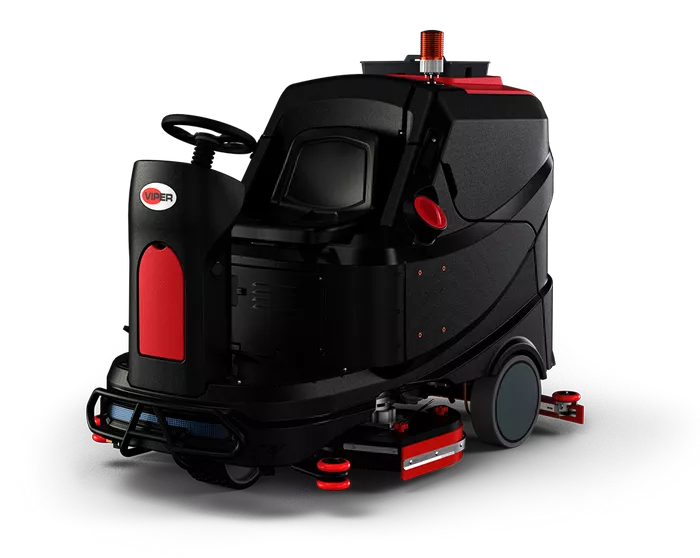Keeping your floors clean is essential for maintaining a hygienic and aesthetically pleasing environment. Whether it’s for commercial or residential use, a floor scrubber can be a game-changer in your cleaning routine. But with so many options available in the market, how do you choose the best one for your needs? In this comprehensive guide, we’ll walk you through everything you need to know about floor scrubbers, from their types and principles to their advantages and disadvantages, helping you make an informed decision.
Types of Floor Scrubbers
Floor scrubbers come in various types, each catering to specific needs and preferences:
1. Walk-Behind Floor Scrubbers: These are compact machines designed for smaller areas. They are easy to maneuver and operate, making them ideal for tight spaces.
2. Ride-On Floor Scrubbers: Suitable for larger areas, ride-on floor scrubbers offer enhanced productivity and efficiency. They are equipped with larger tanks and scrubbing paths, reducing the need for frequent refills and passes.
3. Cylindrical Floor Scrubbers: These scrubbers use cylindrical brushes or pads to agitate and lift dirt from the floor surface. They are efficient in cleaning uneven or textured floors and can handle light to medium-duty tasks.
4. Disk Floor Scrubbers: Disk scrubbers utilize round pads or brushes that rotate at high speeds to scrub the floor surface. They are effective for removing tough stains and grime from smooth surfaces.
Principles of Operation
Floor scrubbers work by combining water, cleaning solution, and mechanical agitation to dislodge dirt and debris from the floor surface. The machine dispenses the cleaning solution onto the floor, agitates it with brushes or pads, and then vacuums up the dirty water, leaving behind a clean surface. Some advanced models may also incorporate additional features such as adjustable brush pressure, variable speed settings, and built-in vacuum systems for efficient cleaning.
Usage Methods
Using a floor scrubber effectively requires proper technique and understanding of the machine’s controls. Here’s a step-by-step guide to using a floor scrubber:
1. Preparation: Clear the area of any obstacles and debris. Sweep or vacuum the floor to remove loose dirt and dust.
2. Fill the Tank: Fill the solution tank with water and the recommended cleaning solution according to the manufacturer’s instructions.
3, Adjust Settings: Set the brush pressure, water flow, and other settings as per the requirements of the floor surface and the level of dirt.
4. Start Cleaning: Turn on the machine and slowly guide it across the floor in overlapping passes, allowing the brushes or pads to scrub the surface thoroughly.
5. Empty the Recovery Tank: Once the cleaning is complete, empty the recovery tank and rinse the machine’s components to prevent buildup and maintain hygiene.
6. Maintenance: Regularly clean and inspect the machine for any signs of wear or damage. Follow the manufacturer’s recommendations for maintenance tasks such as brush replacement and lubrication.
Efficiency and Utility
Floor scrubbers offer several advantages in terms of efficiency and utility:
1. Time-Saving: Compared to traditional mopping methods, floor scrubbers can clean large areas in a fraction of the time, increasing productivity and reducing labor costs.
2.Deep Cleaning: The mechanical agitation provided by floor scrubbers ensures a thorough and deep cleaning of the floor surface, removing stubborn stains and grime effectively.
3. Versatility: Floor scrubbers are versatile machines that can be used on various floor types, including tile, concrete, vinyl, and hardwood, making them suitable for a wide range of applications.
4. Improved Safety: By removing dirt, grease, and other contaminants from the floor surface, floor scrubbers help prevent slip and fall accidents, enhancing safety in the workplace or home environment.
Advantages and Disadvantages
While floor scrubbers offer numerous benefits, it’s essential to consider their limitations as well:
Advantages:
1. Enhanced cleaning efficiency
2. Time-saving
3. Versatility
4. Improved safety
5. Reduced labor costs
Disadvantages:
1. Initial investment cost
2. Maintenance requirements
3. Storage space needed
4. Operator training necessary
5. Limited maneuverability in tight spaces
Cost Considerations
The cost of a floor scrubber can vary depending on factors such as size, features, and brand reputation. Generally, walk-behind floor scrubbers are more affordable than ride-on models, while additional features such as adjustable settings and built-in vacuum systems may increase the price. It’s essential to consider not only the initial purchase cost but also long-term expenses such as maintenance, repairs, and consumables like cleaning solutions and replacement brushes.
Conclusion
Choosing the best floor scrubber requires careful consideration of factors such as the size of the area to be cleaned, the type of floor surface, and budget constraints. By understanding the types, principles, usage methods, efficiency, advantages, and disadvantages of floor scrubbers, you can make an informed decision that meets your cleaning needs effectively. Whether you opt for a walk-behind or ride-on model, investing in a quality floor scrubber can significantly improve cleanliness, productivity, and safety in your home or workplace.

